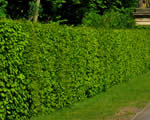 Go to main content
Go to main content
Archive Website of the UK government
Please note that this website has a UK government accesskeys system.
Main menu
Page menu
Home and community

Boundaries and your property documents

When you register property with Land Registry you’ll be sent documents showing you the general boundaries for it. Find out how boundaries are documented and how to get an exact boundary documented.
Boundaries – the basics
Boundaries are lines separating your land from your neighbour’s property.
It’s best to get the formal agreement of your neighbour about a boundary feature (like a fence) before doing anything to it.
Contact Land Registry if you think there’s an error on the Land Registry title plans. They can look into the matter and explain how it happened and try to put it right. If they disagree that an error has been made, they’ll tell you why.
Boundaries and your ‘register’
When you register property with Land Registry, it prepares a document called a ‘register’. This includes information like:
- the owner’s details
- a description – for example, if it’s a flat and what floor it’s on
- a drawing called a ‘title plan’ (see below)
Sometimes it includes information about boundaries. For example, who owns them or who is responsible for maintaining them. However, this information is only available if the paperwork sent to Land Registry at the time of registration contained it (mostly it doesn’t).
Boundaries and your title plan
The title plan is a drawing that shows:
- the unique title number of your registered property
- the Ordnance Survey map used to prepare your title plan
- the scale of your plan (usually 1:1250 for urban areas and 1:2500 for rural areas)
- the administrative area for your property – for example, your local authority
- black lines marking out features like buildings, walls, fences or hedges
- the general boundary
To see an example title plan, use the link ‘Download an example title plan’.
Title plans only show the general position of boundaries: you can’t use them to work out the exact boundary. The title plan:
- is only a representation of what is actually on the ground – actual distances and measurements might be different
- is drawn to a small scale, and this can make it hard to identify if a line is a fence or a hedge, or both
- is based on the Ordnance Survey map which might have missed features like a fence or an extension
Getting an exact boundary
Working out exact boundaries can be expensive and often causes arguments. This is why most land in England and Wales is registered with general boundaries.
If you want to set the exact legal boundary, you can use a process called ‘determining the boundary’. The basic steps for registered land are shown below. If your property is unregistered, get a professional to help you work out the exact boundaries.
Step one
Examine your title plan, and register and any pre-registration deeds you have to get as much information as possible about your boundary.
Step two
Agree any unclear areas with your neighbours and sign a formal agreement with them about what you’ve agreed. A solicitor can help you write the agreement.
Step three
Use a qualified surveyor to draw up a very detailed plan to send to Land Registry. This can form part of any agreement you may make with your neighbour.
Step four
Send this plan, form DB, the appropriate fee and any evidence for the position of the boundary to Land Registry. This evidence may include any agreement with your neighbours.
Step five
If you haven’t included your neighbour’s agreement, Land Registry will contact them to give them a chance to object. If they object and you and your neighbour can’t agree, you could:
- ask Land Registry to consider if your case can be referred to the Adjudicator to HM Land Registry
- go to court to settle the dispute - this is often expensive and takes time
You should get legal advice about your options. The Adjudicator is independent of Land Registry and can settle certain types of disputes about land.
Step six
Only when a dispute has been settled will Land Registry register the exact boundaries.
Where to send your Land Registry forms
The Land Registry office you need to send the forms to might not be the one that is closest to you. Use Land Registry’s office finder to find out which office to send your forms to.

